Wild asparagus: properties, types and recipes
3 ans ago · Updated 6 mois ago
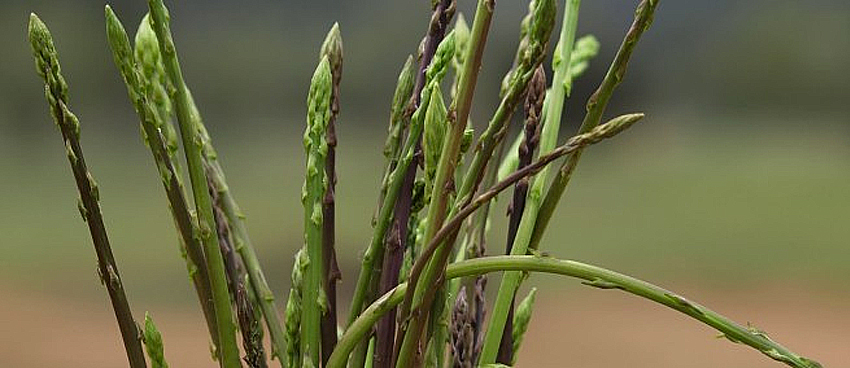
Wild asparagus with the arrival of spring
We'll tell you what they are and give you a few recipes.
These wild fruits are as popular with foragers as the best edible mushrooms, and the number of people who go out in search of asparagus is growing every day. Just like with mushrooms, there are tools and accessories specially designed to make this activity easier for green asparagus foragers.
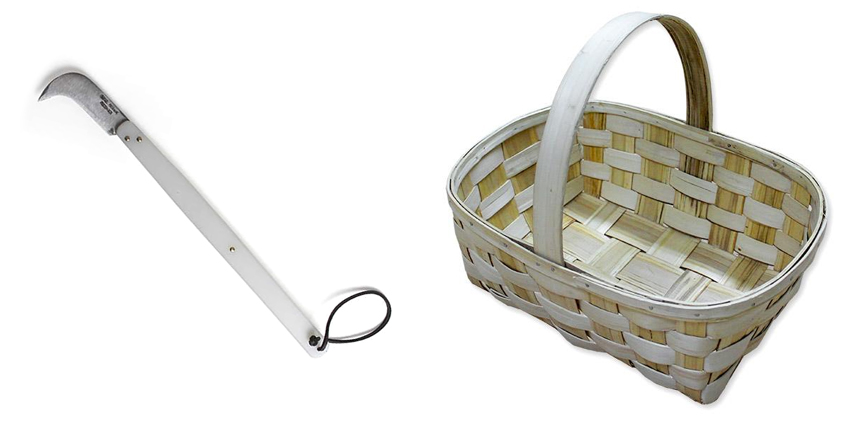
We offer these two accessories for harvesting wild asparagus:
- Long-handled asparagus knife, for easy access to the asparagus stalk and to avoid injury, handcrafted in Spain, very lightweight and useful.
- Natural chestnut asparagus basket, for transporting green asparagus stalks. Lightweight and sturdy, it can also be used for harvesting mushrooms.
Esparraguera, the wild asparagus plant
Wild asparagus (asparagus acutifolius L. ) belongs to the Liliaceae family, the same as aloe and garlic.
The delicious and very popular wild asparagus, which can be harvested in spring in oak groves, pine forests, scrubland, and along the edges of paths and cultivated fields, is found in low-lying areas throughout the Mediterranean region. It prefers dry, even rocky limestone soils, so it can grow at altitudes of up to 1,000 (1,500) meters.
It is a dense bush measuring from 40 centimeters to over a meter. Its stems are woody, gray, and hairy, arched or climbing, with thin, long turions (asparagus).
A shoot is a tender stem that serves as an offshoot on a perennial plant.
This bud emerges after winter, and the best time to harvest it is from February to April and May. It is recommended to pick them when they are more than 10 cm long and before they open.
Cultivation of asparagus
Asparagus cultivated as a vegetable (Asparagus officinalis L.) is native to the Tigris and Euphrates river basins, and was already consumed by the ancient Egyptians and Greeks. It was eventually introduced to Spain by the Romans.
It enjoys a multi-regional geographical distribution, as it is cultivated almost worldwide, although it can sometimes be found growing wild or naturalized on the edges and borders of light forests, especially on the Mediterranean coast, up to 600 (900) meters above sea level.
It has erect green herbaceous stems with long, relaxed tendrils. It is a harmless plant, measuring 3 to 15 decimeters.
The cultivated shoot (asparagus) is thicker.
There are many varieties of cultivated asparagus and, depending on whether or not they grow underground, there is green asparagus, highly prized for its flavor and for the period in which it is harvested, between November and March, and white asparagus, which, not receiving sunlight, does not develop the green chlorophyll of vegetables.
The varieties best suited to growing green asparagus are California Green, Huetor, Plavert, UC-157, Mary Washington, Jersey Giant, Eros, Grande, and Mastric. The most ideal varieties for growing white asparagus are Argentevil, a thick and firm variety, and Darbonne, with thick, high-yielding spears.
What are the flowers of the asparagus plant like?
It flowers from July to September. It is a dioecious plant with unisexual flowers, in which the female and male flowers are found on different individuals or plant stems.
The flowers are greenish, aromatic, and very small, bell-shaped, with 1 to 4 per node (A. officinalis has 1 to 3 flowers per node).
Wild asparagus What are the fruits of the asparagus plant like?
The fruit is a small spherical black berry about 5 millimeters in size, but it is red in the cultivated species.
What are the leaves of the asparagus plant like?
The leaves of wild asparagus are reduced to small whitish scales and are replaced by persistent, rigid, pointed, and slightly prickly cladodes (false leaves) that are 2 to 10 millimeters long and form clusters of 5 to 20.
In the cultivated species, the cladodes are linear and smooth, 0.5 to 4 cm long and less than 2 millimeters thick, grouped in bundles of 4 to 20.
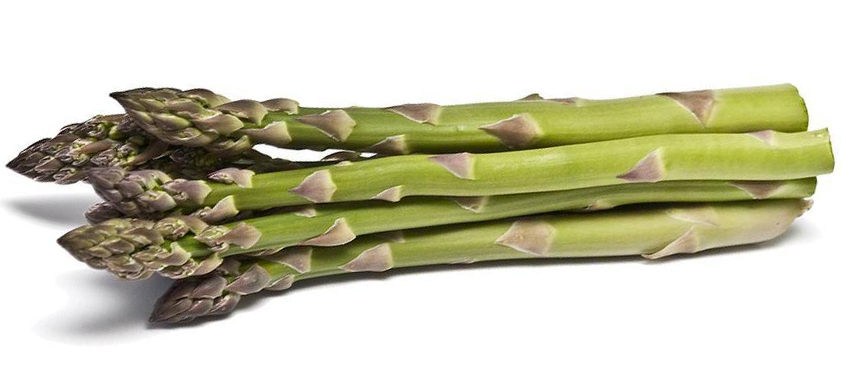
What does wild asparagus look like?
Wild asparagus, Asparagus acutifolius, is a fast-growing perennial plant considered one of the typical plants of the Mediterranean climate. It is very abundant in most regions of the Iberian Peninsula and grows equally well in sunny areas as in shady, cool areas.
It is a true all-terrain plant. There are differences compared to other plants in its family. One of them is the large number of cladodes that perform the function of leaves in other species. These are dark in color during the growth phase, being soft and tender at first, then becoming more woody and thorny with time.
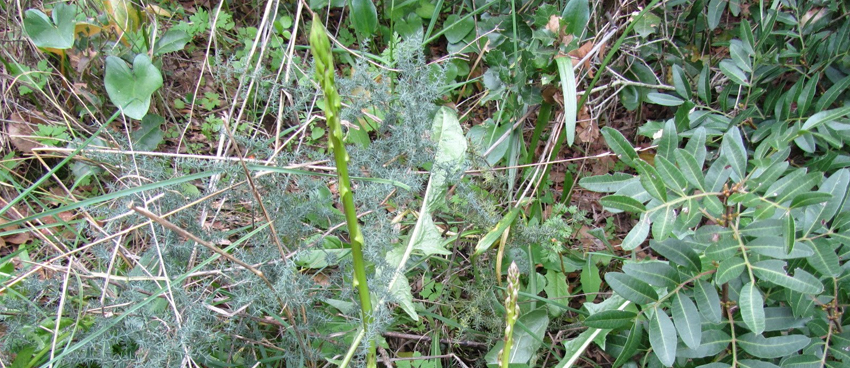
These are the youngest and most tender shoots of the asparagus, the buds, known as wild asparagus or field asparagus. These asparagus have a much thinner diameter than their cultivated relatives, white asparagus (the ones found in cans and whitish in color).
When can we find green asparagus?
Although their flowering period is in late spring, a period of rain followed by warm temperatures will cause asparagus shoots to grow abundantly, even in the middle of winter.
Wild asparagus. Properties and uses
We call the most tender edible shoots wild asparagus. They are elongated and have a lighter green color than the rest of the plant. They are considered a delicacy by some foragers, although they have a slightly bitter taste, which is precisely what is sought after in these shoots. Thanks to their characteristic flavor, they are excellent in omelets and tortillas or as an accompaniment to pasta or rice dishes.
In addition to their extraordinary taste, asparagus has many beneficial properties for our health. It contains a large amount of vitamins (A, C, E, and K) and very few calories. Furthermore, its salt content is very low and it contains no cholesterol or fat. Its diuretic properties are well known in natural medicine.
By eating wild asparagus, we provide our bodies with large amounts of potassium, folic acid, and natural fiber, as well as a substance called asparagine. This substance is responsible for the strong smell of urine that we produce after eating asparagus.
They are one of the best natural antioxidants, providing additional protection for our bodies against degenerative diseases. Their antioxidant properties help rid our bodies of toxins and fluids. In addition, their high folic acid content promotes the production of red blood cells and the creation of new cells.
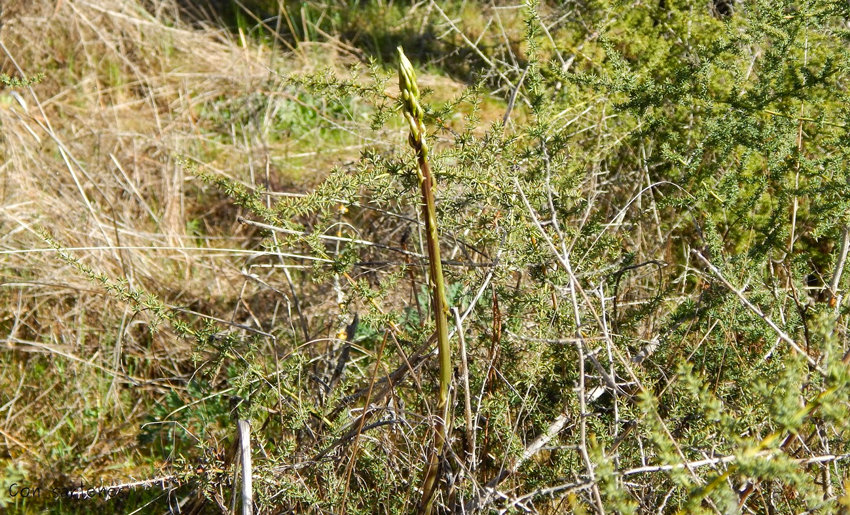
Tips for finding wild asparagus
Enjoying the flavor of these wild plants is a pleasure, but for many people, what they really love is going into the woods to search for green asparagus. What's more, the period when they appear, from late winter to early summer, coincides with the countryside's greatest blossoming, making these walks irreplaceable.
They prefer dry, sunny areas, such as the edges of paths, where they grow abundantly.
In these cases, they have shorter, sturdier stems with dark green and purple tones. In more shaded and cooler areas, we can also find long asparagus stems similar to vines that entwine themselves in the vegetation in search of light.
How to harvest asparagus
When harvesting, always respect the asparagus bed. This will prevent you from pulling it out. To do this, use a knife or bend the asparagus with your fingers until the stem breaks where it begins to be tender and edible.
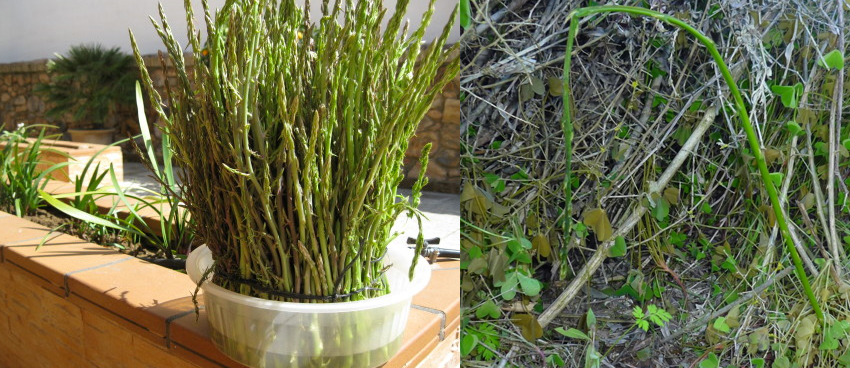
How to transport wild asparagus in the mountains
A good way to transport wild asparagus is to use a wicker or chestnut basket. They are lightweight and long enough to hold the whole stalks lengthwise.
It is also common to transport them in bunches, placing all the asparagus in the same direction. To do this, tie them together with a string or even a long woody asparagus stalk.
Once you get home, you can place them in a container of water, as if they were flowers. You will see that in a few minutes they will be as fresh as they were before you picked them!
Wild asparagus recipes
Going to the mountains to pick these plants is a pleasure. But we mustn't forget that the aim is to cook them at home. They are excellent for making a delicious asparagus cream or for cooking any other recipe. They're delicious! Of course, if you want to know how to cook asparagus, you first need to know how to cook white and green asparagus.
Other recipes with green asparagus
You're probably eager to learn other ways to cook green or wild asparagus. There are many recipes and ways to cook asparagus: stuffed asparagus, grilled asparagus, oven-roasted wild asparagus, and more.
Here are a few green asparagus recipes that we have selected for their originality and simplicity. You're sure to love them!
All that's left to do is put on your apron, get to work, and... bon appétit!
Smoked salmon and asparagus quiche
- Serves 6
- Preparation time: 35 minutes
- Cooking time: 45 minutes
Ingredients
- 1 sheet of puff pastry
- 3 eggs
- 100 g smoked trout
- 1 bunch of green asparagus
- 1 cup heavy cream
- 150 g grated Emmental cheese
- 1 teaspoon butter
- freshly ground pepper
- salt
Preparation
- Butter a removable quiche pan about 22 cm in diameter, cover it with puff pastry and prick the bottom with a fork.
- Clean the asparagus by removing the woody part of the stalk and cook in boiling salted water for 10 minutes. Drain and set aside.
- Beat the eggs and add the cream, grated cheese, smoked trout cut into strips, and asparagus.
Season with salt and pepper and mix well.Pour the mixture onto the puff pastry and bake in a preheated oven at 200°C for 35 minutes, until the surface is golden brown. Remove the quiche from the oven and serve warm or cold.
Smoked fish quiches are very practical and elegant. With a salad on the side, they make a delicious main course. If the wild asparagus is very thin, halve the cooking time by boiling it first. To cook the asparagus properly, it is best to place the bunch in a narrow, high-sided pan so that it stands upright. The water should only cover the tips, which will cook through the steam.
Wild asparagus flans
- Serves 4
- Preparation: 40 minutes
- Cooking time: 45 minutes
Ingredients
- 1 bunch of wild asparagus
- 100 grams of very thinly sliced ham
- 6 egg yolks
- 3 dl of liquid cream
- 1 pinch of nutmeg
- freshly ground pepper
- salt
For the paprika mousseline
- 1 egg
- 2 egg whites
- 1 dl olive oil
- 1 dl sunflower oil
- 1 teaspoon paprika from La Vera
- freshly ground pepper
- salt
Preparation
- Wash the asparagus and remove the base and woody parts of the stalks. Cut them into rounds and cook them in a saucepan with boiling salted water for 10 minutes. Drain them and blend them in a blender with a few tablespoons of the cooking water. Pass the resulting purée through a fine sieve to remove the fibers.
- Beat the egg yolks with the cream and a pinch of nutmeg. Season with salt and pepper and add the ham, cut into very thin strips. Add the asparagus purée and mix.
- Lightly grease 4 individual ramekins and fill them with the mixture. Bake the flans in a bain-marie at 160 degrees for 35 minutes. Allow to cool and carefully turn out onto serving plates.
- Prepare the mousseline by beating the egg with the oil and paprika in a mixer until you obtain a mayonnaise. Season with salt and pepper and add the beaten egg whites. Serve the flans with this sauce and serve immediately.
Asparagus with herb butter
- Serves 4
- Preparation time: 35 minutes
- Cooking time: 15 minutes
Ingredients
- 600 g green asparagus
- 2 ripe tomatoes
- 70 g butter
- 2 tablespoons lemon juice
- 30 g Parmesan cheese
- 1 tablespoon chopped parsley
- 1 tablespoon chopped tarragon
- 1 tablespoon chopped chives
- freshly ground pepper
- salt
Preparation
- Wash the asparagus, remove the woody parts and place them in a narrow, high-sided saucepan. Cover with water until just below the tips and cook for 10 minutes from boiling point. Then drain and refresh under the tap to stop cooking.
- Wash the tomatoes and make a cross-shaped incision at the base. Blanch them in a pan of boiling water for 2 minutes. Then peel them, remove the seeds and cut them into petals.
- Heat the butter in a large frying pan with the herbs and lemon juice for one minute. Add the asparagus and sauté with the butter for another minute. Season with salt and pepper and remove from the heat.
- Drain the asparagus and arrange on plates with the tomato petals alongside, lined up with the butter and herbs, and sprinkle with a few flakes of Parmesan cheese. Serve the remaining butter piping hot in a separate sauce boat.
Cream of asparagus soup with herb sorbet
- Serves 4
- Preparation: 20 minutes
- Refrigeration: 45 minutes
- Cooking: 30 minutes
Ingredients
- 1 kg green or white asparagus
- 75 cl skimmed milk
- 2 pinches cayenne pepper
- 1 pinch of grated nutmeg
- 1 teaspoon cornstarch
- 2 teaspoons hazelnut oil
- freshly ground pepper and salt
For the sorbet
- 2 tablespoons sugar
- 500 ml heavy cream
- 6 basil leaves
- 2 sprigs parsley
- 6 sprigs of chives
Preparation
- Prepare the sorbet. Heat the sugar with 3 tablespoons of water, bring to a boil for 2 to 3 minutes, and let cool.
- Put the cream in a bowl, whip it, add the sugar syrup and keep the mixture in the refrigerator for 30 minutes. Meanwhile, wash and chop the herbs. Remove the mixture from the refrigerator and pour it into an ice cream maker; when it starts to freeze, stir in the herbs. Keep in the freezer.
- Cut the asparagus into rounds and set aside the tips.
- Pour the milk into a saucepan and add the asparagus rounds. Season with salt. Boil for about 20 minutes.
- Meanwhile, steam the asparagus tips for 4 to 5 minutes and set aside.
- When the asparagus slices are cooked, beat the mixture with an electric mixer, add the chicken and nutmeg, and beat again. Pour the purée into the saucepan and add the cornstarch diluted in a tablespoon of water.
Bring the mixture to a boil over low heat and cook for 2 minutes. - Divide the cream into 4 bowls and place a scoop of sorbet in the center. Garnish with the asparagus tips, freshly ground pepper, and a few drops of hazelnut oil.
Fried duck egg with ham crumbs and wild asparagus
- Serves four
- Preparation: 15 minutes
- Cooking time: 15 minutes
Ingredients
- A bunch of wild green asparagus
- One spring onion
- 120 ml olive oil
For the breadcrumbs
- 200 g sandwich bread
- 50 g finely chopped Iberian ham
- 30 ml olive oil
- Salt
- Pepper
Preparation
- Cut the ham into strips and the bread into half-centimeter cubes. Mix them together and sauté in a frying pan with the oil until they turn golden brown and the bread is crispy.
- Remove the ends and a little of the green part of the onions and chop them. Remove the hard part of the asparagus and cut them into 3 cm pieces.
- Heat 2 tablespoons of oil in a frying pan and sauté the onions and asparagus for 3 to 4 minutes. Season with salt and pepper and set aside. Heat the rest of the oil in a small frying pan and fry the eggs one by one until the whites are set.
Season with salt and pepper. - Divide the crumbs between four plates, top with the vegetables and crown with the egg.
Lasagna with salmon, green asparagus, and diced tomatoes
- Serves 4
- Preparation: 40 minutes
- Cooking time: 35 minutes
Ingredients
- 12 lasagna sheets
- 200 g cream cheese
- 3 tomatoes
- 2 onions
- 1 bunch of wild asparagus
- 8 tablespoons of ready-made pesto
- 200 g of marinated salmon
- freshly ground pepper
- salt
Preparation
- Boil the lasagna sheets in a saucepan. Then drain them and spread them out on a clean dish towel.
- Make a cross-shaped incision at the base of the tomatoes and blanch them for 2 minutes in a saucepan of boiling water. Drain, peel, remove the seeds, and dice them.Peel and chop the onions and sauté them with two tablespoons of oil in a skillet over low heat for 12 minutes. Season with salt and pepper and set aside.
- Wash the asparagus, remove the woody parts and place them in a narrow, high-sided saucepan. Cover with water until just below the tips and cook for 10 minutes from boiling point. Then drain and set aside.
- Place a sheet of lasagna on each serving plate and top with the diced tomatoes, caramelized onions, and fresh cheese cut into small squares. Add a spoonful of pesto sauce and cover with another sheet of lasagna. Add the salmon slices and asparagus, line up again with a few drops of pesto and cover with the remaining lasagna sheets. Serve immediately.
Green asparagus and salmon risotto
- Serves 4
- Preparation time: 35 minutes
- Cooking time: 40 minutes
Ingredients
- 350 g Arborio or Carnaroli rice
- 1 bunch of wild asparagus
- 1 onion
- 1 clove of garlic
- 1 small glass of white wine
- 1.2 l vegetable stock
- 4 tablespoons butter
- 3 tablespoons grated Parmesan cheese
- a few pink peppercorns
- freshly ground black pepper
- salt
Preparation
- Peel and chop the onion and garlic clove. Wash the asparagus and remove any woody parts. Cut them into slices and set aside the tips intact. Cook the slices in a saucepan with boiling salted water for 10 minutes, drain and set aside. Heat the vegetable stock.
Add the chopped garlic and asparagus slices and cook for 2 more minutes. Add the rice, stir, and pour in the white wine. - Increase the heat and cook for one minute to reduce the wine a little. Cover with half of the hot broth, stir and cook over low heat for 18 minutes, adding the rest of the broth in several batches.
- When there are 4 minutes left to cook, add the asparagus tips. Once cooked, remove the risotto from the heat and add the Parmesan cheese, pink peppercorns, and salmon cut into thin strips. Stir, let rest for 2 minutes, and serve.
Cheers, mushrooms, and asparagus!

Ils peuvent vous intéresser